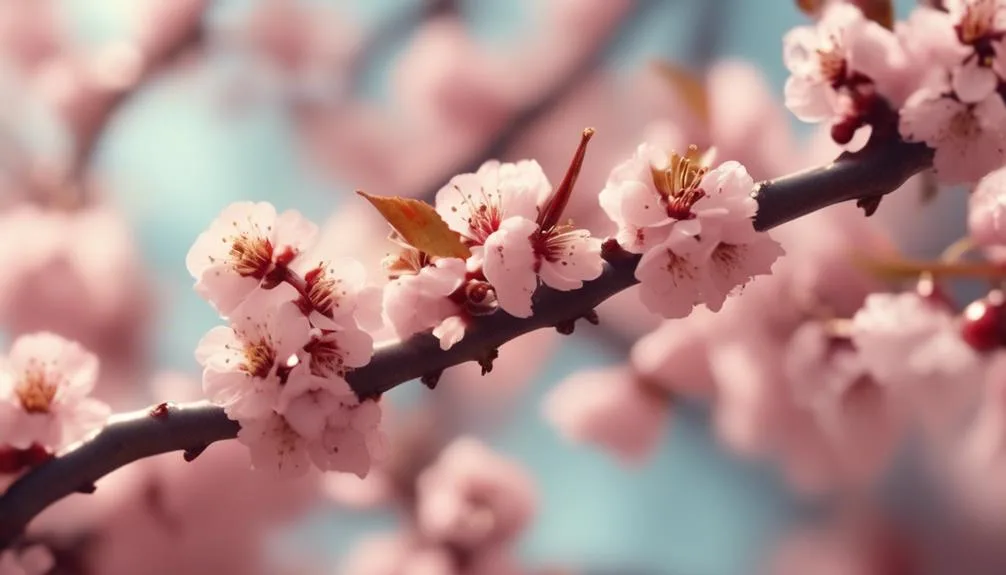Your cherry tree may be strong, but pests can still cause trouble. This article covers common cherry tree pests, how to spot their damage, and methods to protect your tree.
Learn to defend your tree and keep it healthy.
Common Cherry Tree Pests
Cherry trees commonly face a variety of pests that can threaten their health and fruit production. Integrated pest management is crucial for controlling these pests. By using a combination of cultural, biological, and chemical control methods, you can effectively manage pest populations while minimizing environmental impact.
Additionally, choosing pest-resistant cherry tree varieties can reduce the likelihood of infestations. When selecting new cherry trees for your orchard or garden, look for varieties that have been bred to be resistant to common pests in your area. This proactive approach can significantly reduce the need for chemical interventions.
Identifying Cherry Tree Pest Damage
After learning about the common pests that can threaten the health and fruit production of cherry trees, it's essential to recognize the signs of pest damage to effectively address any issues. Identifying cherry tree pest damage is crucial for maintaining the health and productivity of your trees. Here's a simple table to assist you in identifying the common signs of pest damage on cherry trees:
| Pest Damage | Signs |
|---|---|
| Aphids | Curling leaves, sticky residue |
| Cherry Fruit Flies | Small puncture marks on fruit, premature fruit drop |
| Tent Caterpillars | Defoliation, silk tents in branches |
| Japanese Beetles | Skeletonized leaves, clustered feeding damage |
Natural Control Methods for Cherry Tree Pests
To naturally control pests affecting your cherry trees, consider implementing eco-friendly methods such as attracting beneficial insects and using biological sprays.
Beneficial insects like ladybugs, lacewings, and predatory wasps can help keep pest populations in check by preying on them.
You can attract these helpful insects by planting companion plants such as dill, fennel, and yarrow, which provide them with nectar and shelter.
Another natural approach is using biological sprays containing beneficial bacteria or fungi that specifically target cherry tree pests while being harmless to other organisms.
These sprays can effectively reduce pest populations without harming beneficial insects or causing chemical residue on your cherries.
Chemical Control Options for Cherry Tree Pests
Consider incorporating chemical control options to effectively manage pests that are significantly impacting the health of your cherry trees.
Integrated pest management (IPM) involves using a combination of strategies, including environmentally friendly pesticides, to minimize the use of chemicals while effectively controlling pests. Environmentally friendly pesticides, such as insecticidal soaps and horticultural oils, target pests while minimizing harm to beneficial insects and the environment.
When applying chemical control options, it's crucial to carefully follow the instructions on the label to ensure the safety of your cherry trees and surrounding ecosystem. Additionally, consider consulting with a professional arborist or agricultural extension office to identify the most suitable chemical control options for the specific pests affecting your cherry trees.
Preventing Future Cherry Tree Pest Infestations
Incorporating preventative measures to minimize future cherry tree pest infestations is essential for maintaining the health and productivity of your trees.
Start by ensuring soil health. Healthy soil promotes stronger trees that are more resistant to pest infestations. Test your soil regularly and amend it with organic matter as needed.
Additionally, proper tree pruning is crucial. Regularly prune your cherry trees to remove dead or diseased branches, improving air circulation and sunlight exposure. This helps to prevent conditions that attract pests. Remember to dispose of pruned branches properly to prevent any lingering pests from spreading.
Conclusion
By understanding and addressing cherry tree pests, you can safeguard the health and longevity of your trees.
Identifying common pests, assessing damage, and utilizing appropriate control methods are essential for effective pest management.
Moreover, implementing preventive measures is crucial for long-term tree health.
With these strategies in place, you can cherish pest-free cherry trees for years to come.

My interest in trees started when I first saw the giant sequoias in Yosemite.
I was a teenager then, and I remember thinking, “I need to learn more about this.”
That moment stuck with me.
A few years later, I went on to study forestry at Michigan Tech.
Since graduating, I’ve worked in a mix of hands-on tree care and community education.
I’ve spent over ten years helping people understand how to plant, maintain, and protect the trees in their neighborhoods.
I don’t see trees as just part of the landscape.
They are living things that make a real difference in our daily lives.
